|
1936 - Expansion and Ladybird
As has already been mentioned, Myles had purchased a second parcel of land to the north of the first. In early 1936 he was able to add a further broad strip of land to the north and north-west. This added to the length available for taking off which increased the safety margin for aircraft using the airfield. The following year was to see the first military aircraft visit Denham since the RAF had left the site in 1920.
|
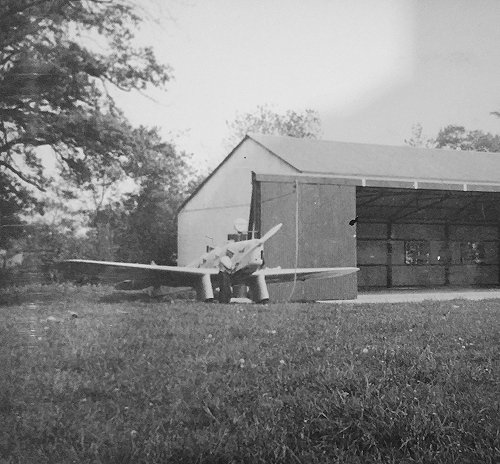
The new fuel pump at Denham was situated at the end of the hangars.
|
As well as the two hangars, Myles also extended the facilities by installing an aviation fuel tank and pump at the western end of the hangars. Previously, aircraft had been refuelled by 5 gallon cans, a laborious process, or flown to other aerodromes with fuel installations, negating some of the usefulness of owning a locally based aircraft.
|
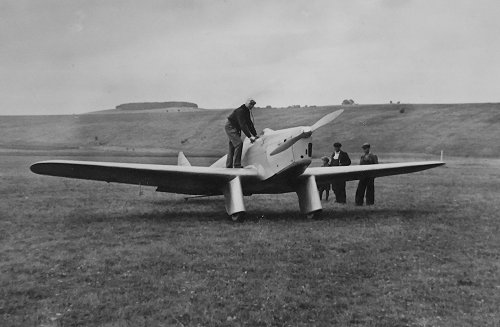
G-ACYO at Newcastle for the air race to York. Myles had fitted the new metal propeller to improve the high speed performance.
|
Myles managed to find time to increase his own flying, using G-ACYO to fly to France on several occasions during the year as well as entering his first air race. On 22 June he flew a trial circuit of the course for the 1936 Kings' Cup Air Race, followed by a second run on 7 July. A try out for the race on 9 July resulted in an average speed of 160mph but resulted in damage to the wooden propeller tips at sustained high revolutions, so a new metal propeller was purchased which improved performance at high speed. On August 22 Myles used the aircraft in this configuration to enter the Newcastle to York race, followed by a race from Hereford to Witley on 21 September. He also used the aircraft to accompany Victor Smith's G-AELT, one of the entries in the Schlesinger African Air Race from Portsmouth to Johannesburg, flying from Denham to Portsmouth to wish the racers 'bon voyage'.
|
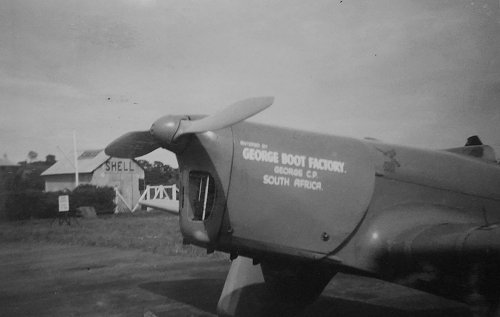
Myles escorted Victor Smith in G-AELT, a Miles M.5 Sparrowhawk, to Portsmouth where he took part in the Schlesinger African Air Race.
|
The number of visiting aircraft increased during 1936, coming from all over the UK as well as a number of foreign aircraft which used the airfield for its easy access to London. The RAF Flying Club, then based at Hatfield, were frequent visitors, Denham being both a useful navigation and "land-away" exercise as well as a place to get a cup of tea and a friendly welcome.
|
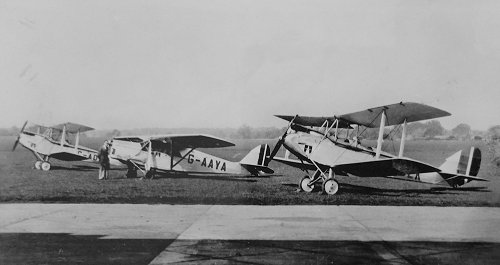
Two de Havilland dH.60 Moths and a dH.80A Puss Moth of the RAF Flying Club at Denham in 1936. The Puss Moth, G-AAYA, had previously been owned by Lady Mary Bailey and used in an attempt on the London to South Africa record in 1933.
|
Towards the end of the year in November, Mr Eric W Pasold approached Myles to seek permission to base his new aircraft at Denham. Eric Pasold was one of three brothers, heirs to a famous Czech textile manufacturer, who had recently set up a new factory in a meadow site next to Langley Station. This was the foundation of the world famous Ladybird children's clothing brand. Eric had learned to fly at Heston in 1935, mostly on the club's Avro Cadets, while his brothers Rolf and Ingo had both become glider pilots at the Dunstable club.
|
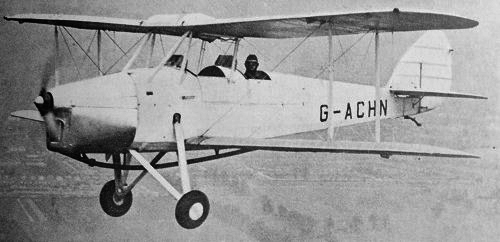
The Avro 638 Cadet from the Airwork Flying Club at Heston on which Eric and Rolf Pasold made their first solo flights in 1935.
|
In July 1936 he had purchased a de Havilland dH.87B Hornet Moth, G-AEKS, from R Craig at Heston and wished to base it closer to his works, enabling himself and his brother to fly into Europe on business with the least delay. Eric was to write a book about his family's development of the company and his flying activities called "Ladybird, Ladybird: A Story of Private Enterprise." This makes fascinating reading, not only as a view of light aircraft operations in Europe at this time, but against the backdrop of the rapidly shifting political situation across the continent and the strains this placed on industry.
|
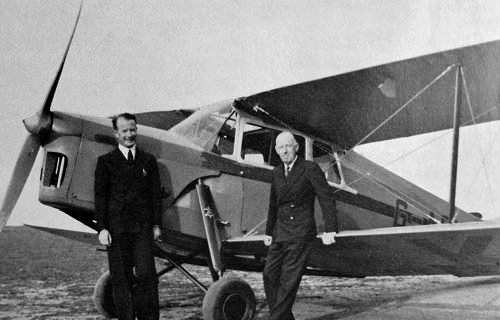
Eric Pasold, left, and Ladybird factory manager Mr Hurst with de Havilland Hornet Moth G-AEKS at Denham.
|
With these expansions in both area and facilities, military aircraft were about to return to Denham as will be described in the next section.
|
|

